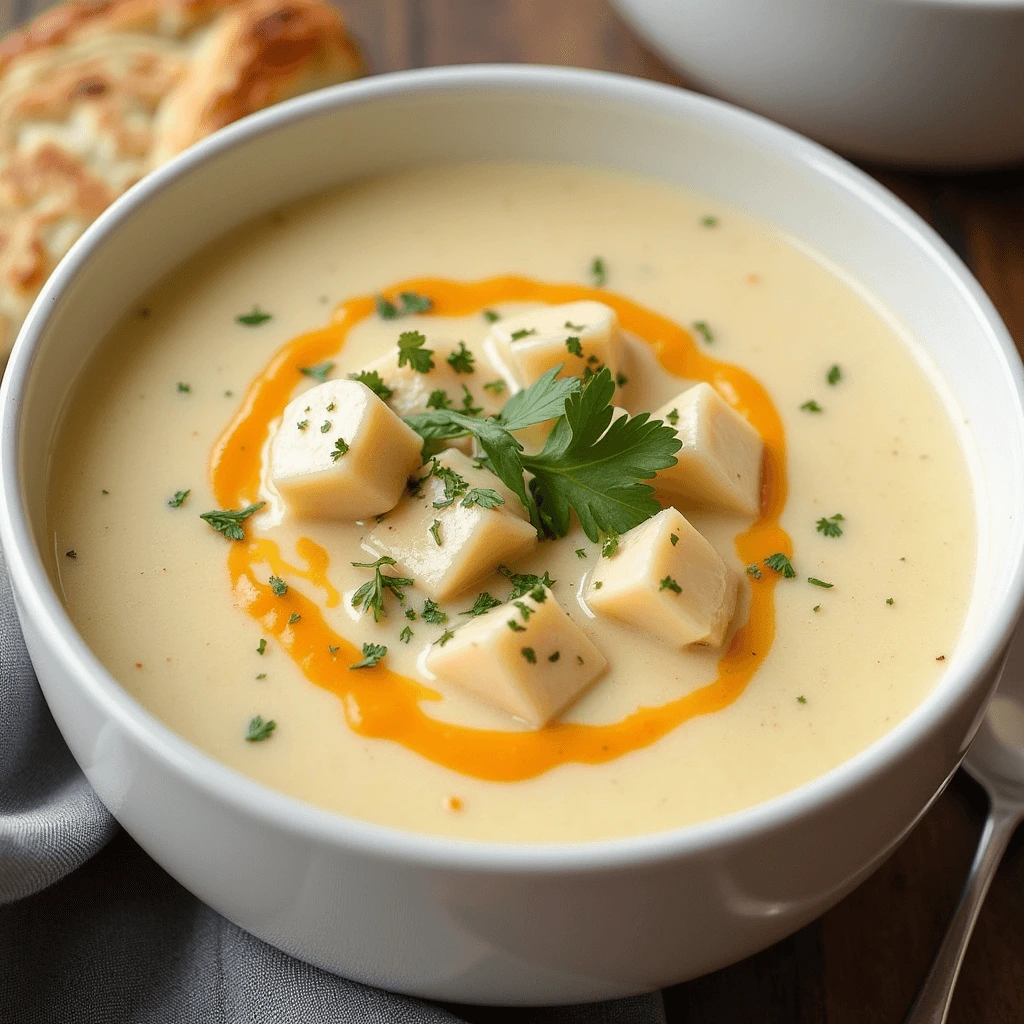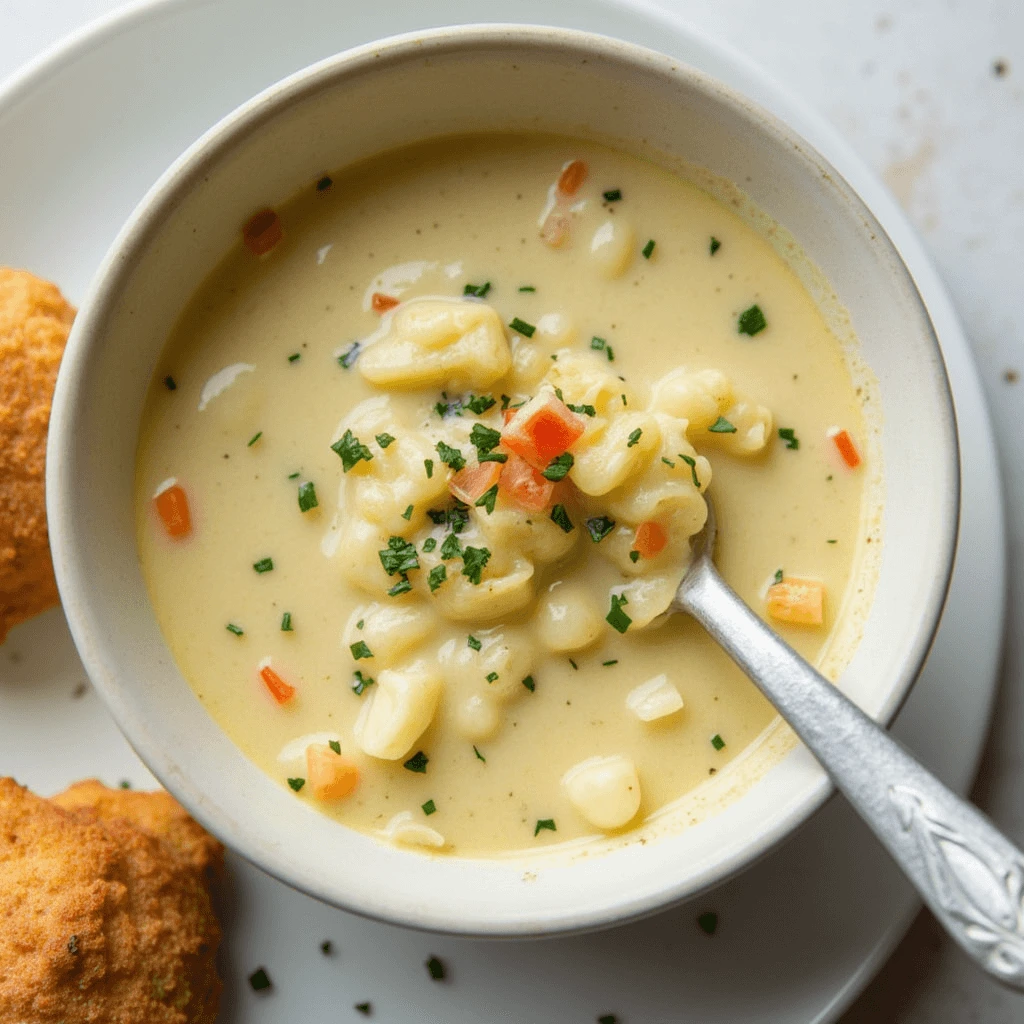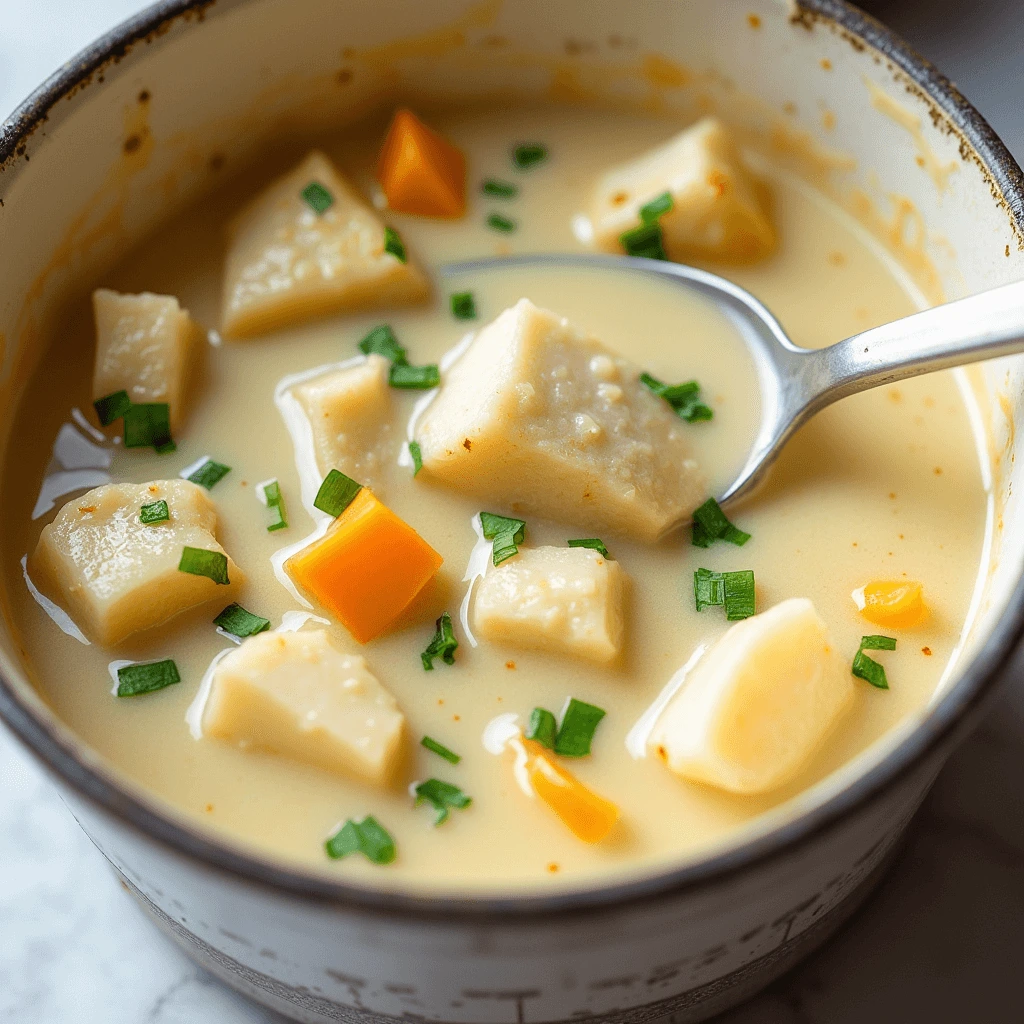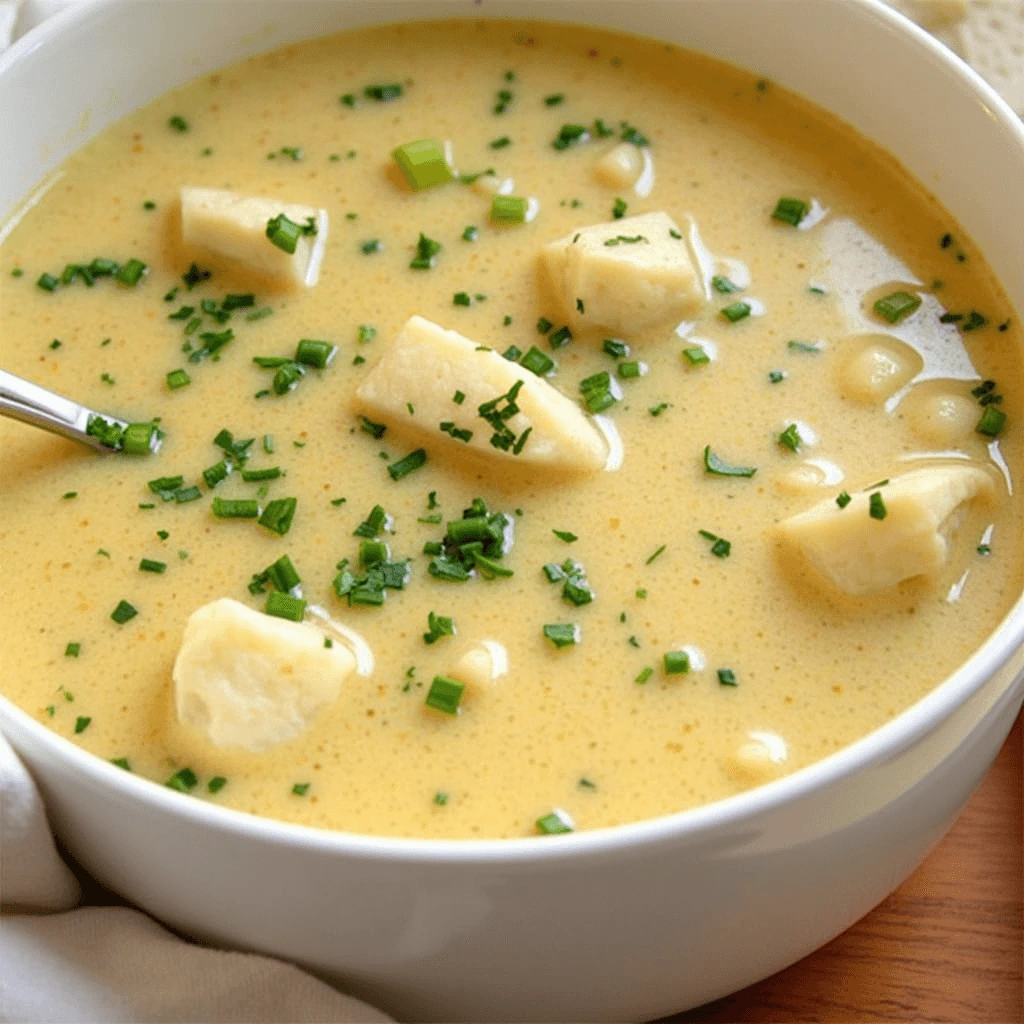Fish Chowder Recipe: 3 Easy Ways to Customize Your Bowl
fish chowder recipe is a rich, creamy, and satisfying seafood dish that has been enjoyed for generations. Whether you’re looking for a hearty meal on a cold evening or a quick and easy dinner packed with protein and nutrients, this chowder is a fantastic choice. The combination of tender fish, savory broth, and aromatic vegetables creates a comforting dish that is both filling and delicious.
Why This Fish Chowder Recipe is Perfect for Any Occasion
Many people assume that making chowder is complicated, but this easy fish chowder recipe proves otherwise. It requires simple ingredients, minimal prep, and can be ready in under an hour. Plus, it’s an incredibly versatile dish—you can tweak the flavors, adjust the thickness, and even make it healthier based on your preferences.
Three Easy Ways to Customize Your Bowl
One of the best things about fish chowder is that you can personalize it to match your taste. In this recipe, you’ll learn three different ways to customize your chowder:
- Classic Creamy Fish Chowder – A traditional New England-style recipe with rich, velvety texture.
- Tomato-Based Seafood Chowder – A lighter, Manhattan-style variation with a flavorful broth.
- Smoky and Savory Chowder – A twist using smoked fish or bacon for an extra depth of flavor.
No matter which version you choose, this guide will walk you through the best ingredients, cooking techniques, and tips to ensure your chowder turns out perfect every time!
How to Make a Classic Fish Chowder at Home
Essential Ingredients for a Creamy Seafood Chowder
A traditional fish chowder relies on fresh ingredients to create its signature creamy texture and rich flavor. Here’s what you’ll need:
- Fish: White fish like cod, haddock, or halibut works best. These varieties hold their shape well and provide a mild, delicate taste.
- Vegetables: Chopped onions, celery, and potatoes create a hearty base, while carrots add a touch of sweetness.
- Creamy Base: Heavy cream or whole milk gives the chowder its classic richness. Some recipes also use butter and a touch of flour to thicken the broth.
- Broth: Use seafood stock, fish broth, or chicken broth for added depth of flavor.
- Seasonings: A mix of Old Bay seasoning, thyme, bay leaf, salt, and pepper enhances the taste.
- Optional Additions: Some people like to add bacon, corn, or leeks for extra flavor and texture.
Step-by-Step Guide to Cooking Homemade Fish Chowder

Follow these simple steps to make a classic, creamy fish chowder at home:
- Cook the Aromatics – Heat butter in a large pot over medium heat until melted. Add chopped onions, celery, and carrots, cooking until soft and fragrant.
- Add Potatoes and Broth – Stir in diced potatoes, then pour in seafood stock or fish broth. Simmer Until Tender – Bring to a gentle simmer and cook until the potatoes soften.
- Incorporate the Fish – Cut your white fish into chunks and gently add them to the pot. Simmer for a few minutes until the fish is opaque and flaky.
- Make It Creamy – Pour in heavy cream or whole milk, stirring gently to blend everything together. Allow the chowder to warm through without boiling.
- Season to Taste – Add salt, pepper, Old Bay seasoning, and thyme. Remove the bay leaf before serving.
- Serve and Enjoy – Ladle the chowder into bowls and garnish with fresh parsley or crumbled bacon. Serve with crusty bread or oyster crackers.
Best White Fish for Chowder: Cod, Haddock, or Halibut?
Not all fish work well in chowder. Quick Selection Guide – Use this simple breakdown to help you decide:
- Cod: A mild, firm fish that holds its shape well in creamy soups.
- Haddock: Slightly more flavorful than cod, with a delicate texture.
- Halibut: A firmer option that gives the chowder a meaty bite.
- Other Options: Pollock, snapper, or even a mix of seafood like shrimp and clams.
Different Styles of Fish Chowder: New England, Manhattan, and More
New England-Style Fish Chowder: The Rich and Creamy Classic
The New England-style fish chowder is perhaps the most iconic variation, known for its creamy, rich texture and hearty flavor. This version is made with a cream-based broth, usually heavy cream or whole milk, which gives it a luxurious consistency. The base is typically flavored with butter, onions, celery, and potatoes, all simmered together to create a comforting dish that’s perfect for chilly evenings.
- Key Characteristics: A thick, creamy base, often with bacon or clams added for extra depth of flavor.
- Popular Fish Choices: Cod, haddock, or halibut are the go-to fish options, as their mild flavor complements the creamy base.
- Common Additions: Bay leaves, thyme, and Old Bay seasoning are commonly used for seasoning, with some variations adding corn or carrots.
This style of chowder has been enjoyed for centuries in the Northeast of the United States, particularly in New England states like Maine and Massachusetts. It’s the quintessential comfort food for those who crave something hearty and filling.
Manhattan-Style Fish Chowder: A Lighter, Tomato-Based Alternative
In contrast to the rich and creamy New England-style, the Manhattan-style fish chowder features a broth-based soup with a tomato base. This version is lighter and often regarded as a healthier alternative because it’s not made with cream. The tomatoes give it a tangy, slightly sweet flavor, while the broth adds depth and complexity.
- Key Characteristics: A clear, tomato-based broth with a lighter, less creamy texture. Often more tangy or acidic than creamy chowders.
- Popular Fish Choices: A mix of seafood, such as cod, shrimp, or clams, can be used, giving it a distinct seafood stew feel.
- Common Additions: This style often includes celery, onions, carrots, and bell peppers, which help balance the sweetness of the tomatoes. Some recipes also call for herbs like oregano or parsley, and a touch of red wine vinegar or lemon juice for extra brightness.
Manhattan-style chowder is popular in coastal cities and is often associated with New York, where it’s a beloved dish that has its own distinct personality.
Pacific Northwest Fish Chowder: A Smoky, Bold Seafood Experience
In the Pacific Northwest, fish chowders take on a bold and smoky flavor, often featuring smoked fish or a variety of local seafood. These chowders are typically broth-based or made with a lighter creamy base to let the flavors of the fish shine through. The use of smoked salmon or smoked trout gives the chowder a rich, smoky depth, making it a standout dish for seafood enthusiasts.
- Key Characteristics: A smoky, savory flavor with fish like smoked salmon or trout, and sometimes bacon or smoked clams for added complexity.
- Popular Fish Choices: Smoked salmon, halibut, and trout are common, though you can also find variations with shrimp and other shellfish.
- Common Additions: A range of vegetables such as leeks, corn, and potatoes provide texture, while fresh dill or tarragon can be used for seasoning. Some recipes also incorporate a splash of white wine to enhance the smoky flavor.
This version of chowder reflects the coastal and river influences of the Pacific Northwest, where smoked fish is a regional delicacy.
Other Regional Chowder Variations to Explore
- Cajun Fish Chowder (Southern USA): Often spicy and rich, this chowder uses a Cajun seasoning blend with shrimp and fish like catfish or red snapper. It’s a hearty dish with lots of flavor and heat.
- Irish Fish Chowder: A simpler, broth-based chowder often made with fresh seafood, potatoes, onions, and a touch of cream. It’s often enjoyed with a slice of Irish soda bread.
- Scandinavian Fish Chowder (Nordic Regions): Typically lighter, using fish stock, cream, and fresh herbs like dill, often served with rye bread. The fish choices tend to be white fish or salmon.
Easy Ways to Customize Your Fish Chowder Recipe
1. Add Smoked Fish or Bacon for a Bold, Savory Twist
One of the best ways to elevate your fish chowder is by adding smoked fish or bacon. The smoky flavor enhances the depth of the chowder, making it more savory and rich. Here’s how to incorporate these ingredients into your chowder:
- Smoked Fish: Adding smoked salmon, smoked trout, or smoked haddock will infuse your chowder with a robust, smoky flavor that complements the creaminess of the base. Chop the smoked fish into bite-sized pieces and add it during the final stages of cooking to preserve its delicate texture.
- Bacon: If you’re a fan of crispy bacon, crumbled bacon or bacon lardons can add a delightful crunch and salty richness. Sauté the bacon at the beginning of your chowder recipe to render out the fat, then remove the crispy bits and sprinkle them on top as a garnish before serving.
Both these options add extra layers of flavor and richness, giving your chowder a unique character.
2. Enhance the Texture with Corn, Carrots, and Other Vegetables

Adding vegetables to your chowder can boost its texture and flavor while keeping it hearty. Here are some vegetable options that work wonderfully in fish chowder:
- Corn: Sweet, juicy corn kernels are a classic addition to many fish chowders, providing a nice contrast to the creamy broth. Corn adds a bit of sweetness and color, making the chowder more visually appealing.
- Carrots: Chopped carrots lend a touch of sweetness and vibrant color to your chowder. They cook down nicely in the broth, adding a subtle flavor that balances the richness of the cream.
- Leeks: Instead of onions, you can use leeks for a milder, more delicate flavor. Their slightly sweet taste pairs wonderfully with fish, and they give your chowder a more refined texture.
- Celery and Potatoes: These staples are essential for a hearty chowder base. You can add more potatoes for extra creaminess or experiment with other root vegetables like parsnips or turnips for a unique twist.
- Spinach or Kale: For a green addition, you can throw in some fresh spinach or kale for a healthy boost. They cook down easily and add some earthy flavor to balance the richness of the chowder.
You can also combine multiple vegetables in your chowder for a more complex flavor profile and enhanced texture.
3. Experiment with Different Herbs and Spices to Add More Flavor
Seasoning is essential to creating a flavorful fish chowder. While salt and pepper are the basics, you can experiment with a variety of herbs and spices to tailor the taste to your preferences:
- Old Bay Seasoning: This classic seafood seasoning is a must-have for many fish chowder recipes. It adds a little heat, paprika, and celery salt to complement the seafood.
- Thyme: Fresh or dried thyme brings an earthy and aromatic quality to the chowder, especially when combined with creamy potatoes.
- Bay Leaves: A couple of bay leaves can add a subtle, fragrant depth to the broth while it simmers.
- Dill: For a refreshing, herbaceous twist, add dill—a common companion for fish dishes. It pairs particularly well with smoked fish chowders.
- Saffron: For a more exotic flavor, try adding a pinch of saffron to your chowder. It lends a delicate floral note and a beautiful golden hue to the broth.
- Paprika and Cayenne Pepper: If you enjoy a bit of heat, a touch of paprika or cayenne pepper can spice up your chowder. Use them sparingly to avoid overpowering the delicate flavors of the fish.
Feel free to adjust the herb blend to your taste. The right combination will bring out the flavors of the fish without overwhelming them.
4. Make It Lighter or Healthier by Substituting Ingredients
If you’re looking to make a lighter or healthier version of fish chowder, there are plenty of ingredient swaps you can try:
- Dairy-Free Chowder: Swap out the heavy cream for coconut milk, almond milk, or cashew cream to make a dairy-free version without compromising on richness.
- Low-Carb Options: If you’re following a low-carb or keto diet, you can substitute cauliflower for potatoes to keep the chowder’s creamy texture. Zucchini or rutabaga also make great low-carb alternatives to potatoes.
- Broth-Based Chowder: For a lighter, broth-based chowder, skip the cream altogether and use fish stock or vegetable broth. This gives you a flavorful, lower-calorie soup that still has the satisfying taste of chowder.
- Whole Grains or Beans: Add some quinoa, barley, or beans for a heartier, fiber-rich chowder. These ingredients will keep you feeling full longer without the need for excess calories.
Making these swaps helps you tailor your chowder to your dietary preferences without losing its comforting appeal.
Healthy Fish Chowder Variations for a Lighter Meal
1. Lighten Up with a Broth-Based Chowder
If you’re looking for a lighter version of fish chowder that still packs plenty of flavor, opt for a broth-based soup instead of a creamy one. A clear broth made with fish stock, vegetable broth, or even chicken stock provides a lighter, healthier foundation for your chowder.
- How to Make It: Start by sautéing onions, celery, and carrots in a little olive oil or butter. Then, instead of using heavy cream, add fish stock or vegetable broth for the liquid. This creates a thinner, yet still flavorful base that allows the natural taste of the fish to shine through.
- Benefits: Broth-based chowders are typically lower in calories, fat, and carbohydrates compared to creamy versions, making them a great choice if you want to enjoy a hearty bowl without overindulging.
2. Use Cauliflower Instead of Potatoes for a Low-Carb Option
For those following a low-carb or keto diet, or simply looking to reduce their carbohydrate intake, cauliflower is a fantastic substitute for potatoes in chowder.
- How to Make It: Instead of using potatoes as your base, dice cauliflower florets into small pieces. When cooked, cauliflower mimics the texture of potatoes but is much lower in carbs. You can steam the cauliflower first to soften it or add it directly to your chowder to cook.
- Benefits: Cauliflower is rich in fiber and vitamins, and swapping it in place of potatoes lowers the overall glycemic index of the dish, making it a great option for those looking to control their blood sugar levels.
3. Dairy-Free Fish Chowder with Coconut Milk or Almond Milk
If you’re looking to make a dairy-free chowder, coconut milk or almond milk are great alternatives to heavy cream or whole milk. These milk substitutes give the chowder a creamy texture without the saturated fat and calories found in dairy.
- How to Make It: Use unsweetened coconut milk for a rich, slightly tropical flavor, or almond milk for a lighter, milder taste. Combine it with fish stock for a creamy, yet dairy-free, chowder.
- Benefits: Coconut milk adds a subtle richness to the chowder while being completely dairy-free, and it’s also a good source of healthy fats. Almond milk is lower in calories and fat compared to coconut milk, making it a suitable choice if you’re looking for a lighter version.
4. Increase the Veggie Content for More Fiber and Nutrients
Adding more vegetables to your chowder not only boosts nutrition but also enhances texture and flavor. Non-starchy vegetables like spinach, zucchini, and bell peppers can be added to increase fiber without significantly increasing the calorie count.
- How to Make It: Add spinach or kale during the final stages of cooking to wilt into the chowder. Zucchini, which has a mild flavor, can be diced and added to the broth without overpowering the dish. Bell peppers add sweetness and crunch, and they’re packed with vitamins A and C.
- Benefits: These vegetables are not only low in calories but also high in antioxidants, fiber, and vitamins that contribute to overall health. The extra veggies will make your chowder feel more satisfying and nutrient-dense, while keeping it light.
5. Use Lean Fish and Seafood to Keep the Meal Healthy
To make your fish chowder lighter and lower in fat, opt for lean fish such as cod, haddock, or pollock. These varieties have a mild flavor and firm texture, making them perfect for chowder. You can also use shrimp or scallops, which are low in fat and high in protein.
- How to Make It: Choose fresh, wild-caught fish to ensure the best quality and leanest option. Simply cut the fish into chunks and add them to the chowder, simmering until the fish is cooked through.
- Benefits: Lean fish is a fantastic source of protein without the added saturated fats, and it also provides healthy omega-3 fatty acids. Substituting high-fat fish like salmon or swordfish for leaner varieties keeps the chowder light and nutritious.
6. Skip the Bacon for a Healthier, Lower-Fat Chowder
Although bacon adds a deliciously smoky flavor, it can also contribute to extra calories and fat. If you want to reduce the fat content of your chowder, consider skipping the bacon or using turkey bacon or smoked turkey breast as a healthier alternative.
- How to Make It: Instead of starting your chowder with bacon, use olive oil to sauté your aromatics, or try adding smoked paprika or liquid smoke for a similar smoky flavor without the fat.
- Benefits: Skipping the bacon makes the chowder lighter, while still maintaining a savory, satisfying flavor. Using smoked turkey breast or turkey bacon as a substitute lowers the calories and saturated fat while still providing a bit of smokiness.
Best Sides for Fish Chowder and Storage Tips

1. Ideal Side Dishes to Complement Fish Chowder
When serving fish chowder recipe, choosing the right sides can enhance the meal, balancing the flavors and adding variety. Here are some great side dish options that pair well with fish chowder:
Crusty Bread or Rolls
One of the most classic side dishes for fish chowder is a slice of crusty bread or a warm roll. The texture of the bread contrasts nicely with the creamy soup, and it’s perfect for soaking up any leftover broth in your bowl.
- Option 1: A loaf of sourdough bread or French baguette provides a slightly tangy flavor and chewy texture that pairs wonderfully with the richness of the chowder.
- Option 2: If you prefer something softer, opt for dinner rolls or a buttery biscuit for a bit of indulgence.
Fresh Salad with Tangy Dressing
A light green salad with a tangy dressing is the perfect way to balance the richness of fish chowder. The crisp freshness of greens provides a refreshing contrast to the creamy soup.
- Option 1: A simple salad with mixed greens, arugula, and cucumbers dressed with lemon vinaigrette offers a crisp, zesty complement.
- Option 2: Coleslaw (either creamy or vinegar-based) also works well as it provides a crunchy texture and a bit of sweetness to balance the savory chowder.
Roasted or Steamed Vegetables
Roasted or steamed vegetables can add extra flavor and texture to your meal, helping to make the chowder feel more substantial without overloading it.
- Option 1: Roasted carrots, parsnips, or Brussels sprouts bring a slight sweetness and earthy flavors that complement the fish.
- Option 2: Steamed asparagus or green beans add a fresh, tender bite and look beautiful next to a creamy chowder.
Corn on the Cob
Since many fish chowder recipes include corn, serving fresh corn on the cob is a great way to tie in those sweet, juicy kernels. A little butter and salt on the corn can elevate this side dish, making it a perfect addition to your meal.
Cheese Biscuits or Cheddar Muffins
If you’re looking to serve a more indulgent side, cheese biscuits or cheddar muffins are an excellent choice. The savory, cheesy flavor of these biscuits pairs beautifully with the creamy chowder. You can make them with a little garlic and herbs to add extra flavor.
How to Store Leftover Fish Chowder for Maximum Freshness
fish chowder recipe can be a bit tricky when it comes to storing leftovers, as the creamy broth can sometimes separate or become grainy over time. Here are the best storage tips to ensure your chowder stays fresh for as long as possible:
Cool Before Storing
It’s important to let your fish chowder recipe cool down before storing it. Allow the chowder to reach room temperature, which will prevent condensation inside the storage container and help maintain the creaminess of the broth.
- Tip: Do not leave the chowder out for more than two hours to avoid the growth of harmful bacteria.
Store in an Airtight Container
For the best results, store your fish chowder recipe in an airtight container to keep out air and moisture. This will help preserve the texture of the chowder and prevent it from absorbing other odors in the fridge.
- Tip: Consider dividing your chowder into single-serving portions in separate containers. This allows you to reheat just what you need without exposing the whole batch to air each time.
Refrigeration Time
fish chowder recipe will stay good in the fridge for about 2-3 days. Because of the dairy and fish, it’s important to consume the leftovers within this timeframe to ensure the chowder doesn’t spoil. If you don’t think you’ll be able to finish it in time, it’s better to freeze it.
Freezing Fish Chowder
If you want to store your fish chowder recipe for longer, freezing is a great option, but there are a few things to keep in mind:
- Avoid Freezing Creamy Chowder: Dairy-based chowders (like those with cream or milk) can separate and become grainy once thawed, so it’s best to freeze only the broth and add the cream after reheating.
- Tip: Before freezing, allow the chowder to cool completely, then transfer it to a freezer-safe container or zip-top freezer bag. Mark the Container – Write the date and contents on the container to track its time in the freezer.
- Storage Duration: Fish chowder can be kept in the freezer for 2-3 months. When you’re ready to eat it, thaw the chowder overnight in the fridge and then reheat it over low heat, adding any cream or dairy at the end.
Reheating Fish Chowder
When reheating chowder, it’s best to do so slowly on the stovetop over low heat. Stir frequently to ensure even heating and to prevent the soup from separating. If the chowder appears too thick, add a splash of milk, cream, or fish stock to return it to the right consistency.
Conclusion: Enjoying the Versatility of Fish Chowder
fish chowder recipe is a timeless comfort food that offers endless variations and customization options, allowing you to tailor the recipe to suit your personal preferences or dietary needs. Whether you prefer a rich and creamy base or a lighter broth-based version, this dish is versatile enough to satisfy any craving.
From adding smoked fish or bacon for extra flavor, to swapping in healthier ingredients like cauliflower and almond milk, fish chowder can easily be adapted to your taste and nutritional goals. You can also experiment with different types of fish and seafood, ensuring your chowder always feels fresh and exciting.
Sides like crusty bread, fresh salads, or roasted vegetables elevate the meal and add balance, while simple storage tips make it easy to enjoy your chowder over multiple days, or even freeze for future meals. With just a little preparation, you can have a satisfying, nourishing meal that brings the whole family together.
So next time you’re craving a hearty, flavorful meal, consider making fish chowder and feel free to get creative with your ingredients and sides! Whether you’re cooking for yourself, a special occasion, or a casual family dinner, this dish is sure to impress.
If you’ve never made fish chowder before, don’t hesitate to try one of the variations outlined here. Each version brings something unique to the table, from lighter options for a healthier twist to heartier variations for when you’re craving a comforting meal. And don’t forget to experiment with your favorite fish and fresh ingredients to make this classic dish your own.

